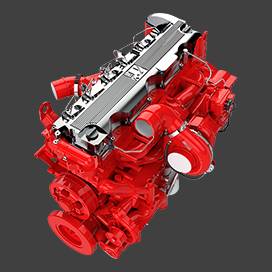Nov . 06, 2024 15:56 Back to list
Effective Methods for Releasing Stuck Drum Brakes on Your Vehicle
How to Remove Seized Drum Brakes
Drum brakes, an integral part of many vehicles, operate by forcing friction material against the inside surface of a drum to slow down or stop the vehicle. While they are effective in providing braking force, sometimes their components can become seized due to corrosion, wear, or a lack of use. Removing seized drum brakes can be a challenging task, but with the right tools and techniques, it can be accomplished efficiently. Here’s a step-by-step guide to help you through the process.
Tools Needed
Before you begin, gather the necessary tools
1. Jack and Jack Stands To lift and secure your vehicle. 2. Lug Wrench For loosening lug nuts. 3. Brake Drum Puller A specialized tool designed to remove drum brakes. 4. Hammer For tapping and loosening corroded components. 5. Pry Bar To help leverage parts apart. 6. Protective Gear Including gloves and safety goggles.
Step-by-Step Instructions
1. Preparation Ensure your vehicle is parked on a flat surface, and engage the parking brake. This is crucial for safety during the removal process.
2. Lifting the Vehicle Use a jack to lift the vehicle and securely place it on jack stands. Never rely solely on the jack for support, as it can fail.
3. Removing the Wheel Use the lug wrench to remove the lug nuts from the wheel covering the drum brake. It's easier to loosen the nuts while the wheel is still on the ground.
4. Inspect the Brake Drum Once the wheel is off, inspect the brake drum for rust or damage. If the drum appears badly corroded or damaged, you may need to replace it rather than attempt removal.
5. Check for Retaining Screws Some brake drums are held in place with retaining screws. If applicable, remove these screws using an appropriate screwdriver.
how to remove seized drum brakes

6. Applying Penetrating Oil If the drum is rusted or stuck, apply a penetrating oil around the edges where the drum meets the backing plate. Allow it to soak in for at least 15-20 minutes to loosen the grip.
7. Using a Brake Drum Puller If the drum doesn’t come off easily, employ a brake drum puller. Position the puller on the drum, ensuring a secure fit. Gradually tighten the center screw on the puller, applying tension to the drum. This should help pull the drum off without excessive force.
8. Tapping with a Hammer If the puller doesn’t work or you don’t have one, gently tap around the drum's outer edge with a hammer. The vibrations can help loosen rust and debris that may be causing it to seize.
9. Employing a Pry Bar If the drum is still stuck, use a pry bar to gently pry it away from the backing plate. Be cautious not to damage any brake components during this process.
10. Removing the Drum Once loosened, carefully pull the drum off the wheel hub. Be mindful of any brake hardware that may still be attached.
11. Inspect Components With the drum removed, inspect the brake shoes, springs, and other components for wear or damage. It’s a good time to replace any parts that are worn out.
12. Reinstallation If you’re replacing the drum or the brake components, install the new parts by reversing the removal process. Ensure everything is properly aligned and secured.
13. Final Checks Before placing the wheel back on, make sure all components are in place and checked for functionality. After everything is reassembled, lower the vehicle carefully and reattach the wheel.
Conclusion
Removing seized drum brakes can be a daunting task, but with the right tools and patience, it’s a process that can be tackled by those willing to put in the effort. Always prioritize safety, and if at any point you feel uncertain about performing the procedure, consulting a professional mechanic is advisable. Regular maintenance and inspection can also prevent braking issues in the future, ensuring a safer driving experience.
-
Explore Japan: Ultimate Travel Guide & Authentic Experiences
NewsAug.19,2025
-
Your Brake Drum Man: Premium & Reliable Brake Drums for Sale
NewsAug.18,2025
-
ROR Web Development: Build Fast, Scalable, Secure Apps
NewsAug.17,2025
-
Scania Brake Drums: OEM Quality for Optimal Safety & Durability
NewsAug.16,2025
-
R.V.I: Advanced Remote Visual Inspection for Precision
NewsAug.15,2025
-
Discover HYUNDA: Innovative Vehicles, Equipment & Solutions
NewsAug.14,2025
